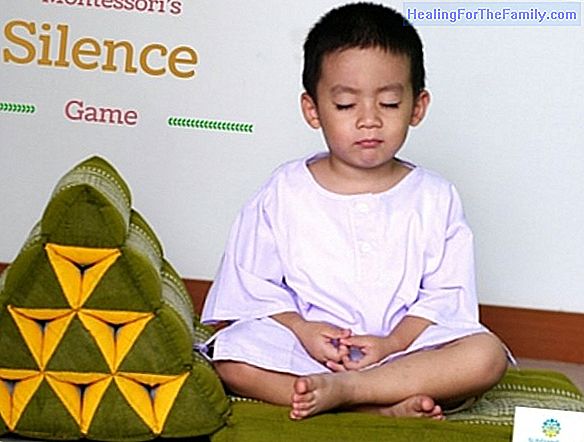The balloon technique to calm nervous children
There have always been more nervous children. The temperament, the personality ... There are so many factors that influence in making our children 'small earthquakes'! But we can always help them to recover their calm. How? There are many techniques. The boat of calm, The technique of the turtle ...
There have always been more nervous children. The temperament, the personality ... There are so many factors that influence in making our children 'small earthquakes'! But we can always help them to recover their calm. How? There are many techniques. The boat of calm, The technique of the turtle ... and also the balloon technique . Yes, the balloon. Do you want to know what it is?How to use the balloon technique to calm nervous children
The balloon technique helps the most nervous children to control their impulses.

Help the child control his nerves by teaching him to breathe correctly to achieve calmness. Obviously, you need balloons, colored balloons. And a rather large space inside the house. We explain the steps you should follow: 1. First you must explain to the child that if he is nervous,
he really feels like a balloon too inflated, about to explode.2. Now you should ask the child to sit down. You sit close to him.
3.
Inflate a balloon, so much, that it explodes av (tell him what is going to happen so he does not panic). Explain that this is how we feel when we are nervous or angry and we feel we can not control ourselves. P 4. Ask the child to inflate a balloon a lot, but not too much, so that it does not explode, and to try to empty the air balloon but slowly , without it being fired like a rocket (although this last one is so much fun for the children). children).
5. Now ask the child to close his eyes and imagine that it is a balloon. He must breathe very deep, so much that he feels that he is about to explode, like the balloon. Then, you must expel the air as slowly as possible. In this way, you explain, you will not explode and you will recover your calm.
6. Once the child opens his eyes, you ask him to remember situations in which he has felt like the balloon about to explode. Una ... A fight with a friend, when parents scold you, or when they ask you to do something you feel you can not do well ... Explain that each time you feel this way, you should take a deep breath, inflate like the balloon and expel the air little by little as he has done now, to achieve calmness. This technique works with childrenfrom 7 years
. And it does not just teach children to control their emotions when they feel nervous or angry. It also helps them to improve concentration and to work with patience. Best of all, the most nervous parents can also use it.
Other techniques to calm restless children There aremany techniques to help more nervous children to calm down . Write down these other possibilities: El 1. The calm boat:You only need a bottle (plastic if the child is too small, to avoid risks) or a boat. You have to fill it with water and add a few tablespoons of glitter and some transparent liquid glue. You can also use glue with glitter (in other countries they call it adamantine). You stir well and ready. When the child shakes the boat, the glitter will move at great speed in a disorderly manner. You must explain to the child that this is how he feels when he is angry or nervous. The child will observe how little by little the glitter stops and the calm returns to let pass seconds. La 2. The turtle technique:
You must tell your child the story of the Manolita turtle, that every time she felt angry she got into her shell and counted to 10 before leaving. Then, I noticed that everything was calm again. Ask your child that whenever he feels nervous or angry, do as the Manolita turtle, 'hide' in his inner shell and count to 10.
3. Montessori's silence game: You should ask your son to sit on the floor, close your eyes and think it's a flower or a rock. He must be as still as they are. You will have to remain silent until you hear a final sound or call your name. Let 30 seconds pass. As soon as this time is over, ask her to explain how she feels.












